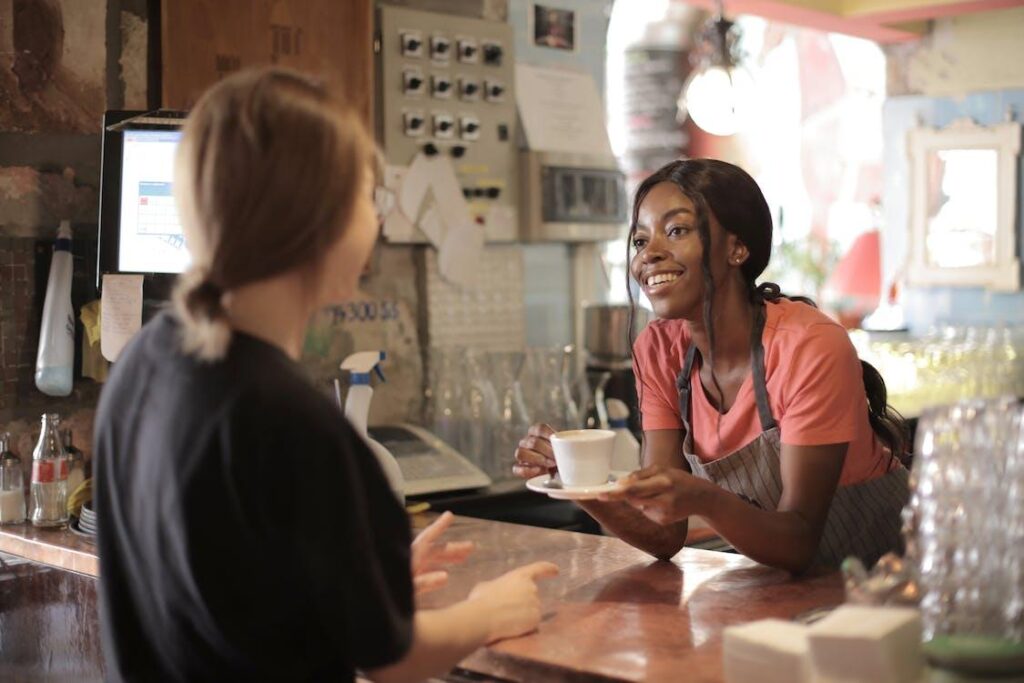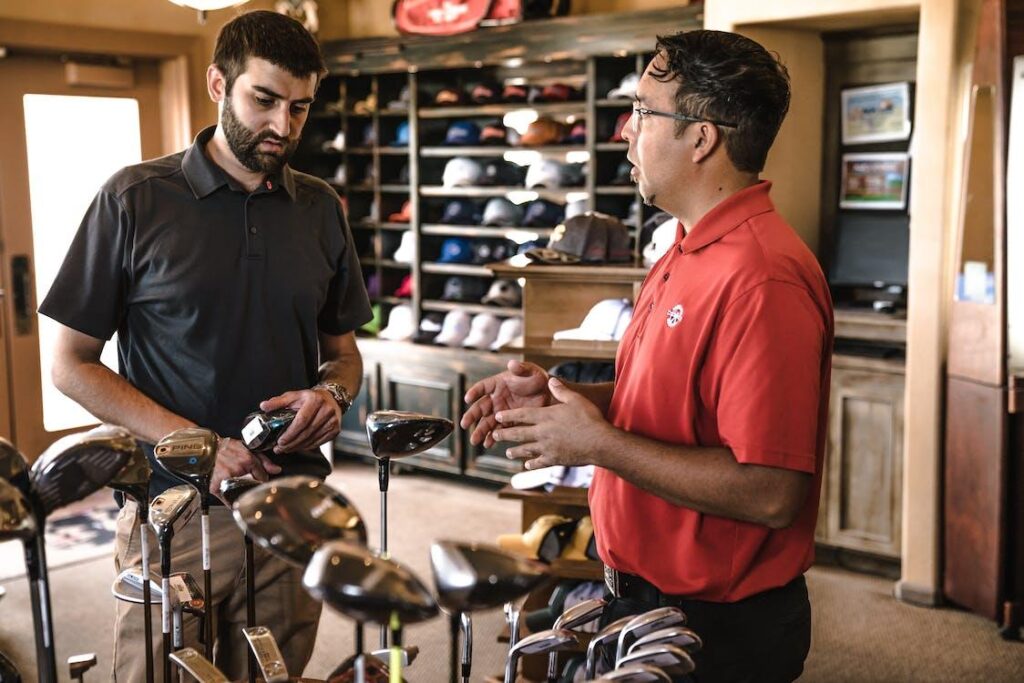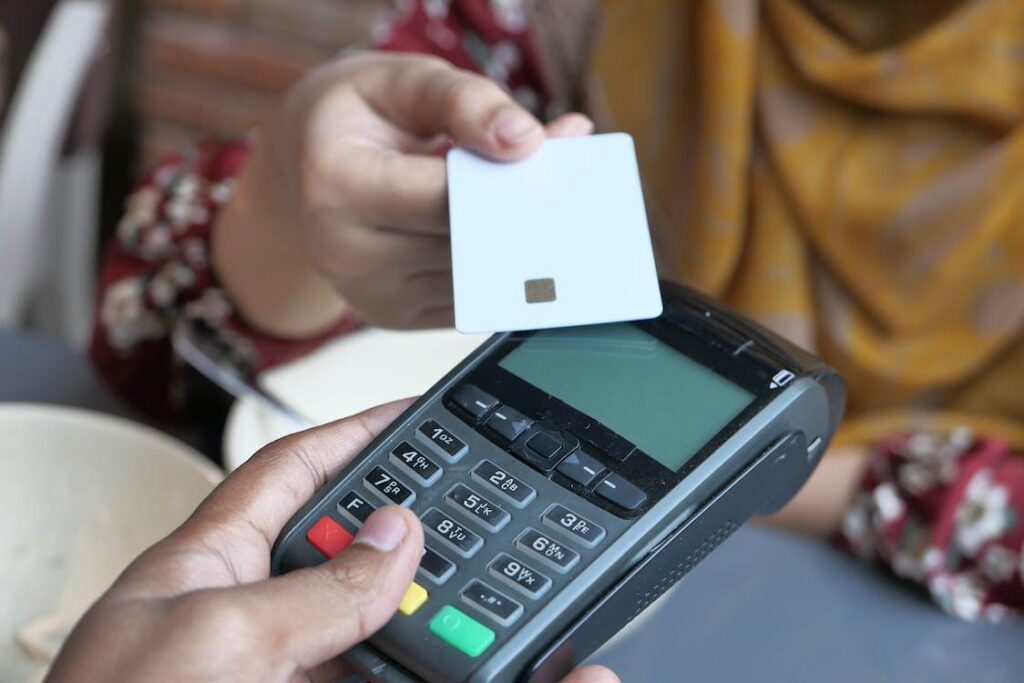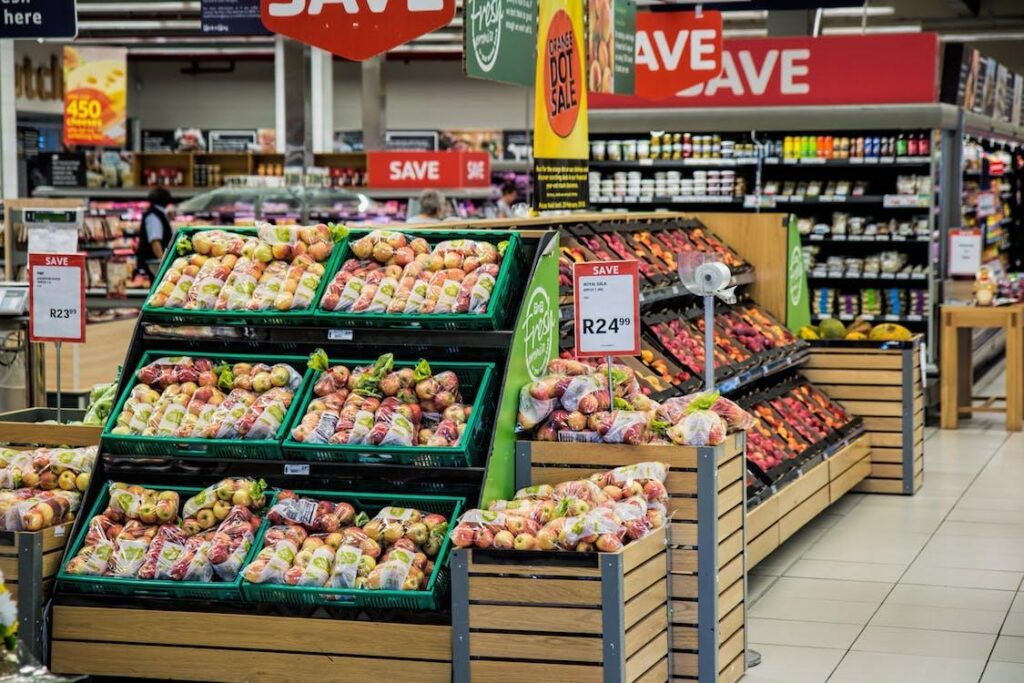For a brick-and-mortar retailer, deciding how to improve the retail customer experience is like putting a puzzle together – there are a lot of parts, and everything has to fit together just right for the resulting in-store experience to be complete. And while a great retail customer experience is a challenge in today’s demanding and rapidly evolving market, it’s a challenge with a great payoff.
In this article, we’ll discuss eight strategies to elevate your customers’ in-store experience.
Key Takeaways About the Retail Customer Journey
Crafting the right in-store customer experience means:

- Embracing omnichannel interactions and personalizing customer interactions within the physical store.
- Using special events to generate excitement and attract customers to your building.
- Paying attention to the employee experience; engaged and happy employees mean engaged and satisfied customers.
- Minimizing wait times and optimizing the checkout process.
- Using customers’ feedback to regularly monitor and improve their in-store experience.
Why Understanding the Retail Customer Experience Is Crucial to Success
According to a Frontiers in Psychology research paper “customer experience comprises the shopping environment, staff service environment, shopping procedure, and product experience. Customers process these antecedents as a source of information integration to encapsulate customer experience.”

In other words, the retail customer experience may center around the physical store, but it doesn’t begin or end there. Customer experience in retail often starts online through website visits, search results, social media interactions, ads, branded or third-party apps, etc. That’s because any touchpoint is part of the customer’s experience with the brand. Retail CX includes everything from advertising to item returns – any opportunity the customer has to form an opinion about your company.
And, in the retail world, the stakes are high. The market is crowded, and customer experience has become the key area of competition. Over time, the many purchases, store trips, website visits, app notifications, sales flyers, and employee interactions come together to create an image of what your brand is all about.
How In-Store Interactions Contribute to the Overall Customer Experience
Physical stores are central to the brand experience. Everything from the parking lot layout to the store lighting are part of the customer’s experience. Even in this highly digital era, your brick-and-mortar retailer’s location is what customers will associate most closely with your brand.
And employee interactions are at the heart of customer satisfaction. According to one study, 2 or 3 negative interactions are enough to make 86% of customers stop doing business with a brand; 49% said they had actually done this in the past year.

Interestingly, improving employee engagement has been shown to increase customer engagement as well. Employees that are better trained and supported by management are often more knowledgeable, enthusiastic, and helpful – which contributes to a positive customer experience. So it’s not surprising that companies with highly engaged employees consistently outperform the competition.
How to Improve Customer Experience in Retail Stores
So, what changes can you make to improve your retail customer experience? Here are eight areas that can raise your in-store CX from average to exceptional.
1. Personalizing the In-Store Experience
At first glance, personalized CX in retail may seem to belong strictly to the digital realm. However, brands can still personalize customers’ in-store experiences. And it starts with the employees.
As we mentioned above, employees that are engaged and informed are critical to the customer’s impression of the company. This is especially true when we consider that brick-and-mortar stores’ roles have expanded; they now also serve as product demonstration areas, order pickup points, return centers, and places to consult with experts (i.e. the staff).

So, how can you set your employees up for success? Training is, of course, essential. Ensuring that employees have access to all the needed information is also critical in this multifaceted environment. Some retailers give employees mobile devices so they can access information instantly, helping customers solve their problems on the spot without needing to move to another location.
And let’s not forget the simplest and most effective path to a positive experience: talking with customers. Whether it’s a genuinely friendly greeting or an in-depth discussion of some item’s features, how employees treat customers can make every interaction feel personalized. Retailers should train their employees in this non-technical but very valuable art.
For more information about current trends in retail CX, see Zendesk’s retail customer experience guide for 2023.
2. Optimizing the Checkout Experience
A long, slow-moving checkout line once in a while can annoy a customer; a store that consistently has long waits at the checkout can easily lose that customer.

- Checkout options. In addition to cashier-served checkout lanes, many businesses use self-scan checkouts and mobile checkouts (i.e. customers scan items with their smartphone’s store app and complete the checkout process in a special lane). These can process significantly more customers and alleviate overcrowded lines.
- Payment options. Offering digital payment options as well as the traditional cash or card can also speed up the checkout process, particularly compared to lines that only accept one form of payment.
- Tech choices. Malfunctioning software and out-of-date hardware can bring the checkout process to a crawl. It’s akin to trying to work on an outdated laptop running an old operating system – not the user experience you want your customers to associate with your store! To avoid this, ensure that your PoS and payment systems are fully integrated and up to date.
- Employees (and managers). Employees should be trained to work with checkout equipment; they should also be able to help self-serve customers quickly troubleshoot any problems. Scheduling more employees during busy times is essential to keeping both traditional and self-service checkouts rolling.
3. Managing Customer Waiting Times
According to a survey by the retail tech provider Wavetec, 73% of shoppers who wait more than 5 minutes will simply abandon their intended purchase. So, how can you minimize customer wait times?
The checkout lane often comes under scrutiny here, but that’s not the only bottleneck in the customer journey.
Consider store layout and signage. Is it clear what the customer must do to complete their purchase? If you have specialized checkout lanes (e.g. based on customer type, order size, etc.), signage should make it clear who should and shouldn’t use these lanes. The same principle applies to customer service and returns; signs and other visual indicators can remove a lot of confusion and frustration from the process – even before customers start interacting with employees.

Some stores have tried the idea of virtual queueing. Much like an online reservation, a virtual queue allows customers to reserve a place in line while they continue to shop. Not only does this shorten the perceived wait time, it can also lead to the shopper picking up a few extra items as they wait.
Another proven tactic to manage the waiting customer’s experience is to have them engage with employees. Having an employee direct customers to less congested lines or let them know about estimated wait times can reduce some of the customer’s frustration. When wait times lengthen, having someone to communicate the reason for the change can make the customer feel calmer and more valued.
4. Building a Community Around Your Brand
For many people, in-store shopping is a social activity. Brands can play into this by using their space to host events that customers will be interested in: a cooking demonstration for a kitchen retailer or specialty grocery store, makeovers for fashion stores, talks and book clubs at bookstores, and so on. When you match in-store activities with the goals and preferences of your loyal customers, you’re reinforcing that you understand them and their needs. This builds customer engagement and satisfaction.
However, smart retailers are using the trends towards omnichannel and phygital experiences to redefine what it means to build a community. It’s incredibly common to see customers use their smartphones to research items they are about to buy in-store; it’s also common for customers to find an item online and then check it out in person before making a buying decision.
This blending of the digital and physical experience has given rise to the term “phygital”, which we discussed in our article on retail customer journeys. Essentially, it gives the retailer more ways to create a great impression; the caveat is that the physical and digital worlds must be cohesive for the impression to be positive.
5. Creating a Loyal Customer Base
There’s a reason loyalty cards and reward programs have been a standby in retail for so many decades. But statistics suggest that many retailers aren’t being as effective as they could be with their loyalty program. According to Statista, the average American “loyal customer” belongs to 16 loyalty programs – but actively uses only about half of them.

How can you leverage loyalty cards to actually, you know, build loyalty? Two ways that have recently shown a lot of promise are gamification and personalization.
Gamification (using game-play elements like points, levels, challenges, etc. to increase engagement) has been linked to markedly increased social shares and online activity. And personalization not only provides the tailored experience that customers crave, it also helps you match rewards to each customers’ interests and history. This removes one of the main barriers to loyalty card engagement: uninspiring, inapplicable rewards.
Loyalty programs are not the only way to build community and engagement. User-generated content has become especially important in creating a sense of community around a brand. No matter how good the content is on your website or social media accounts, there should always be room for content created by your customers and brand fans. Not only does this type of content stir up interest and excitement, it also comes across as honest and authentic – qualities that Millennial and Gen Z audiences find particularly desirable.
6. Integrating Online and In-Store Experiences
We’re all aware of the frustration of starting a shopping journey on one channel (say, a store’s social media) and then arriving on another channel (say, the store’s website) to find different information, pricing, etc. This type of experience can quickly ruin a retailer’s credibility and a customer’s loyalty. But that’s not the only reason why omnichannel is so important to the customer.

The key reason is often convenience: shoppers who order online and pick up in-store are looking for a smooth and convenient experience. Any friction will slow down their journey; continued friction results in dissatisfaction.
And let’s not forget the value of omnichannel to the retailer. The fact is, omnichannel customers are more engaged, purchase 250% more frequently, and have higher order values than single-channel customers.
7. Optimizing Your Store’s Website for Customers
Many customers turn to retail websites for additional information about the products they’re considering. Packaging can tell customers about the product’s features and employees can answer some questions, but neither can provide the amount of detailed, specific information that your website can. Thus, in-store customers frequently refer to product pages to access customer reviews and other information while they’re in the store. This makes optimizing your store website important – even for customers who regularly shop the brick-and-mortar store.
8. Gathering and Utilizing Customer Feedback
We can’t discuss ways to improve the in-store retail customer experience without talking about feedback loops – a process of gathering customers’ opinions, analyzing them, and using them to shape decisions about in-store CX.

What’s the difference between simply “getting feedback” and a feedback loop? Feedback loops are closed, which means you acknowledge the customer’s response and, if appropriate, follow up on it. This builds a feeling of connection with the customers and lets them know their contribution is valuable – even if it can’t currently be included in the company’s plans.
An example customer feedback loop
Let’s take a quick look at the feedback loop, starting with gathering input from customers. There are many ways to do this, from using detailed online surveys to questionnaires and in-person interviews. One very common way is the super-short post-checkout survey. It looks something like this:
- After the customer has completed their purchase, they’re asked (usually on the payment screen) if they were satisfied with their in-store experience.
- A positive response is acknowledged; a negative response can be asked for additional information or permission to follow up.
- The information is collected and analyzed to improve the store’s CX.
This is a very simplified example; in a customer service setting, for instance, a customer may be contacted multiple times and the order of acknowledgement and analysis may be different.
Regardless of their length or complexity, few things are as valuable as a feedback loop if you want to hear your customers’ own views on the retail experience. They can help you find otherwise overlooked improvement areas and optimize your retail business performance.
Your Next Steps for a Better In-Store Retail Customer Experience
The retail landscape is varied; what works for one location and brand may not work for another. So, choosing the right methods to increase customer satisfaction with in-store experiences may take some fine-tuning. In this article, we’ve discussed high-tech solutions as well as some traditional (but often forgotten) ways to provide better customer service. Which ones will you incorporate into your CX endeavors?
If you’re having trouble deciding – or if you need some clarity into your retail customer experience in-store or online – contact CX by Design to set up a free consultation. We’ll be happy to help you balance data, technology, and the human element to come up with a more customer-centric experience.